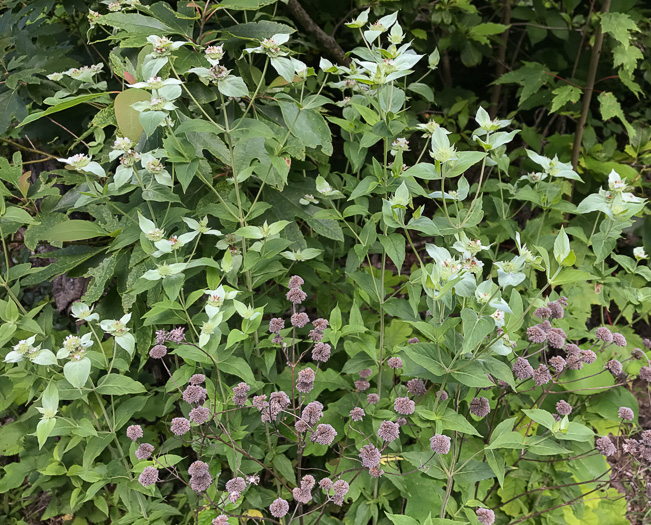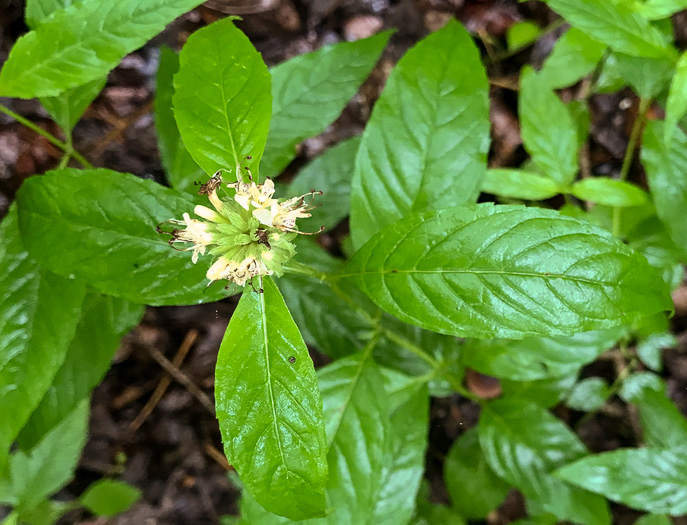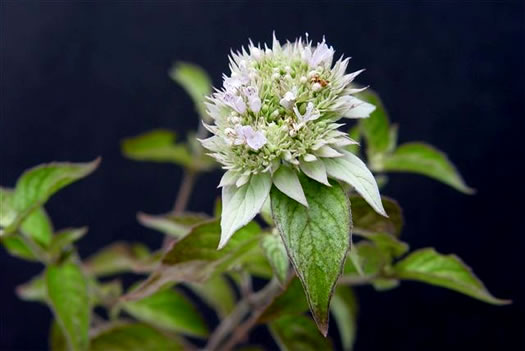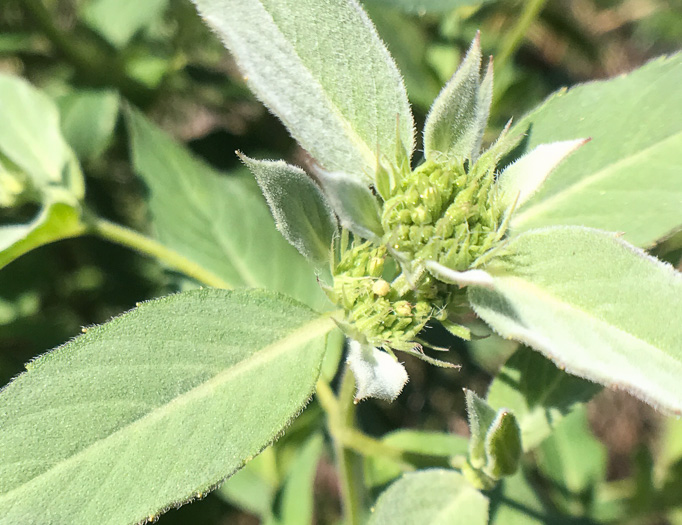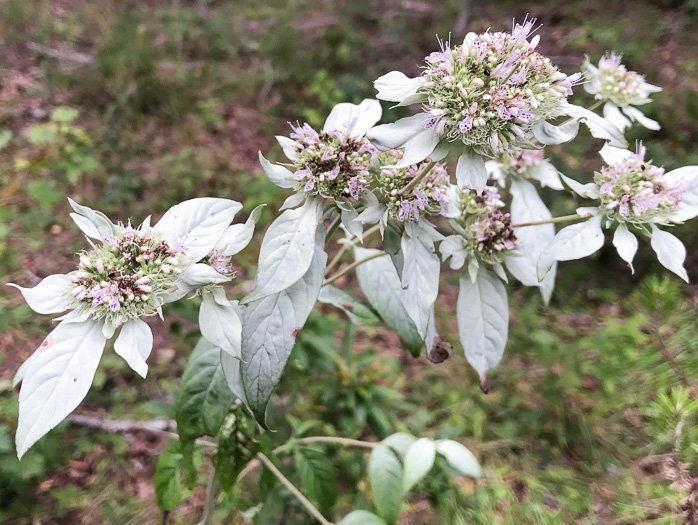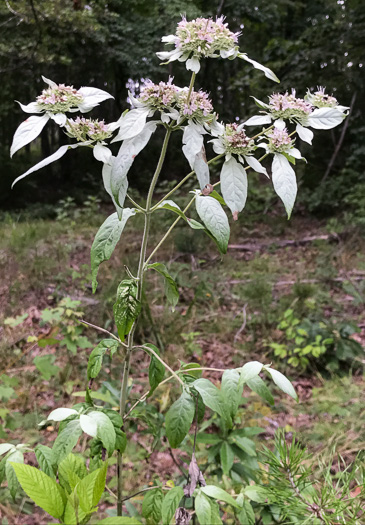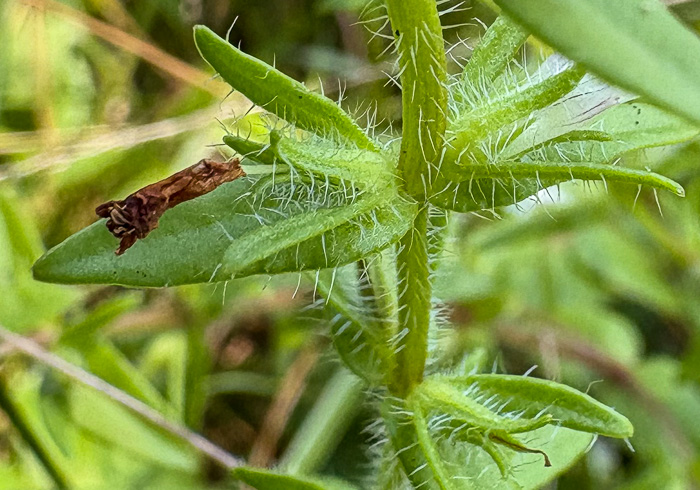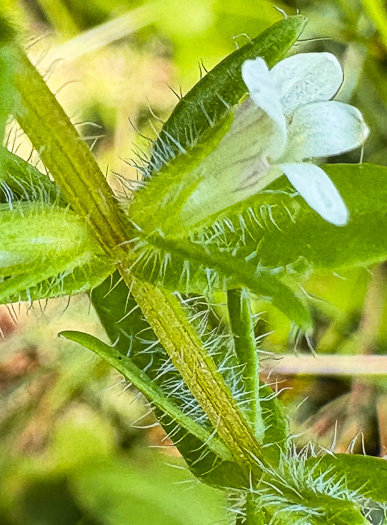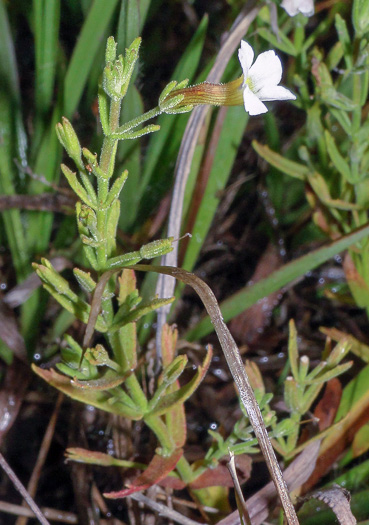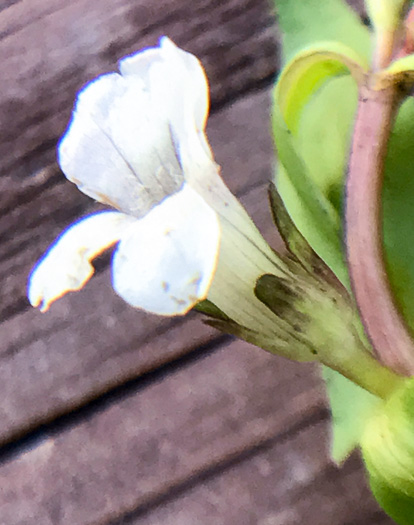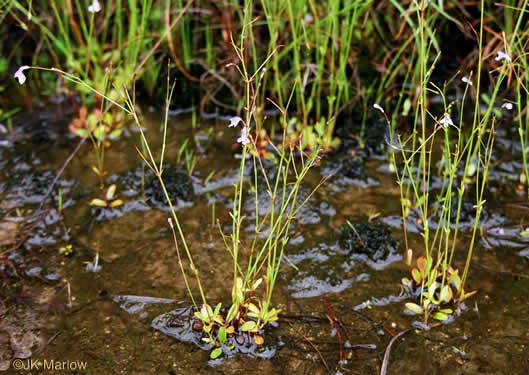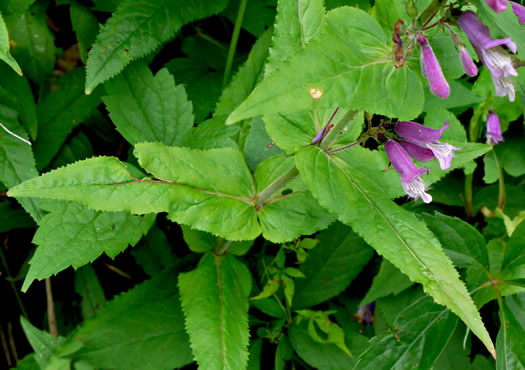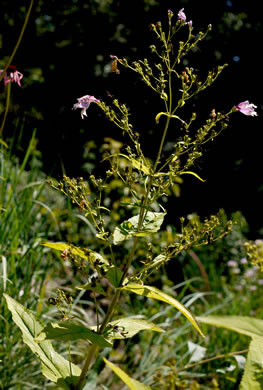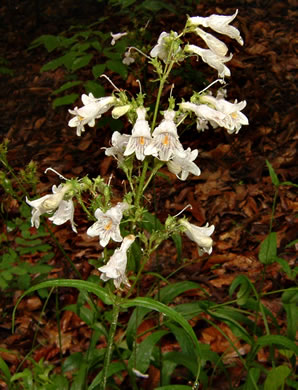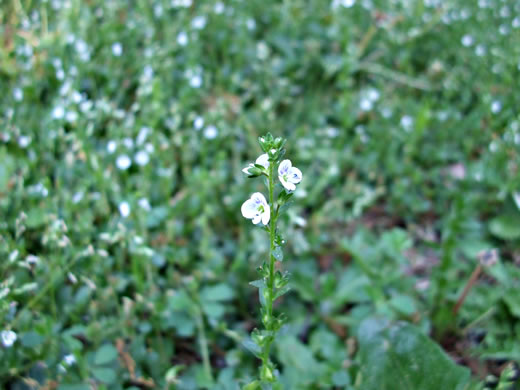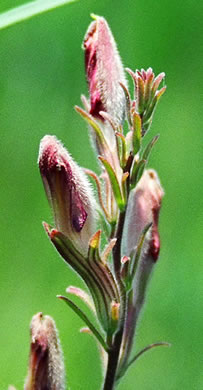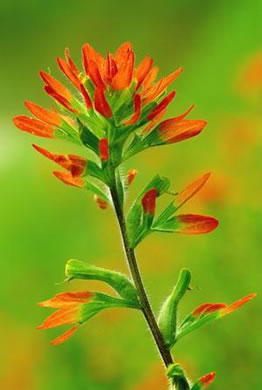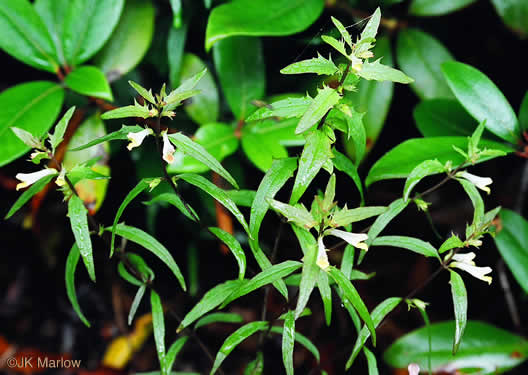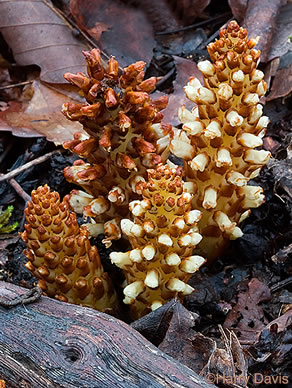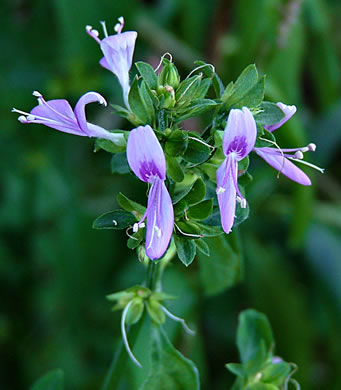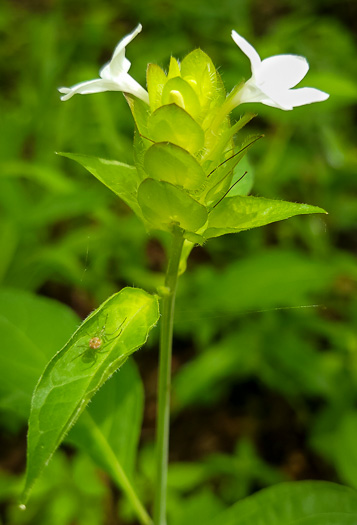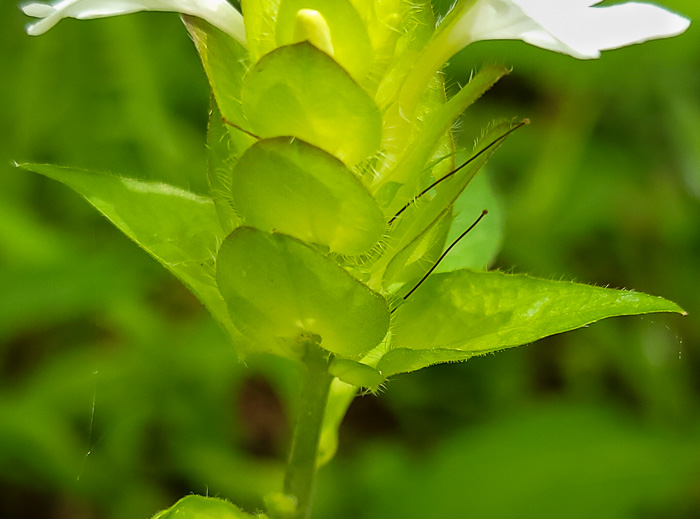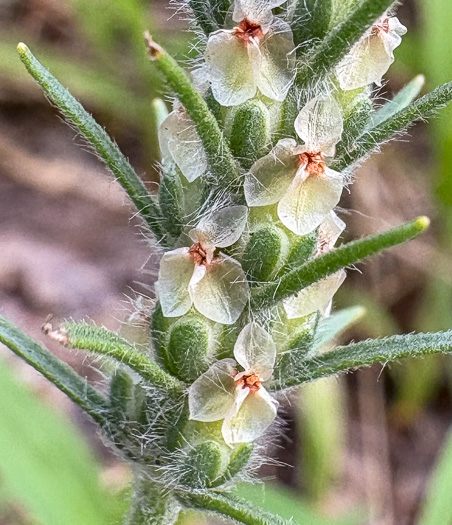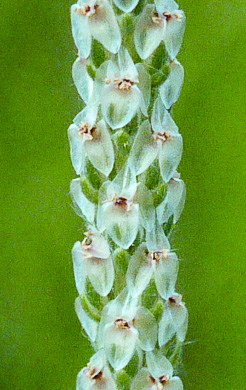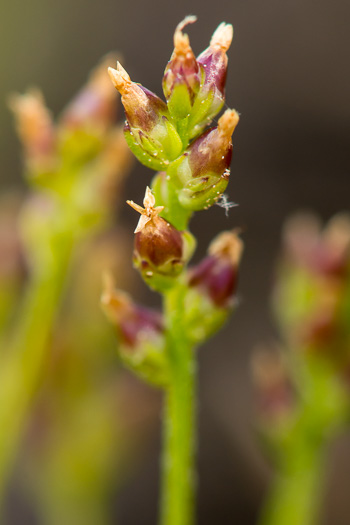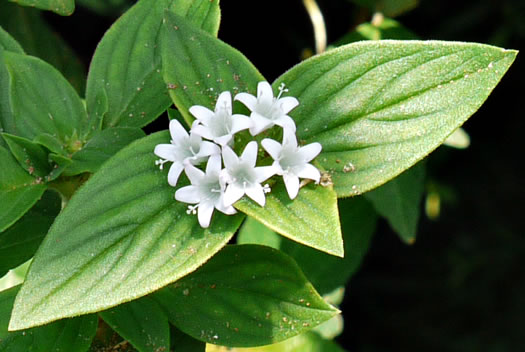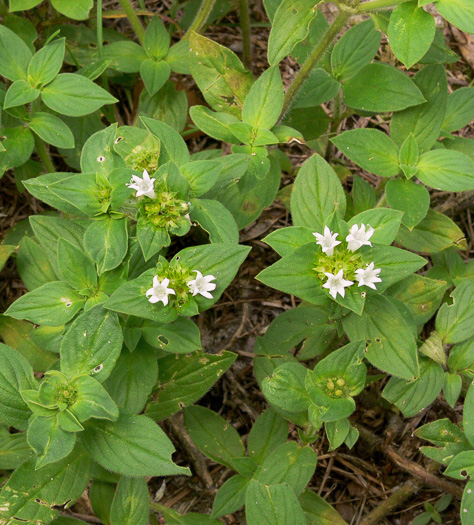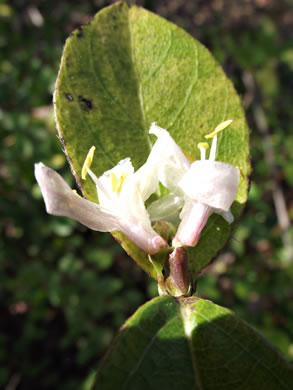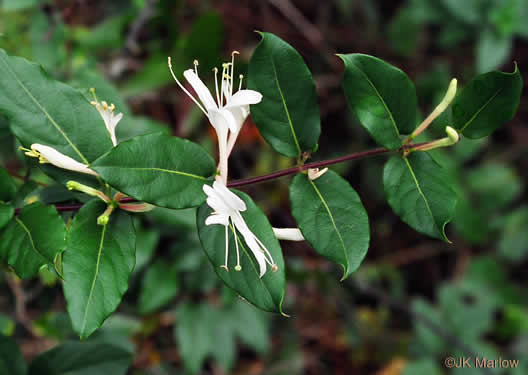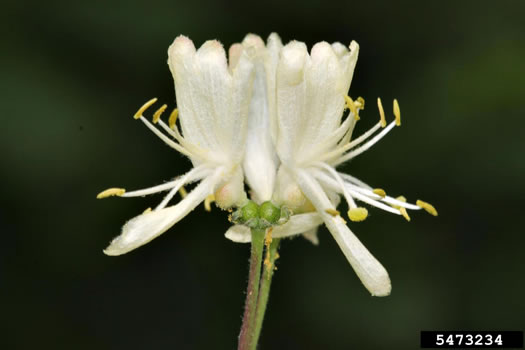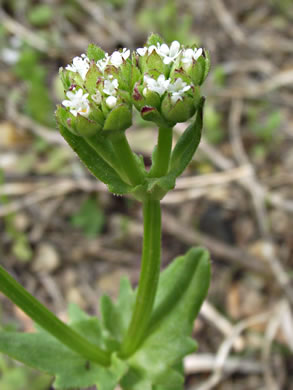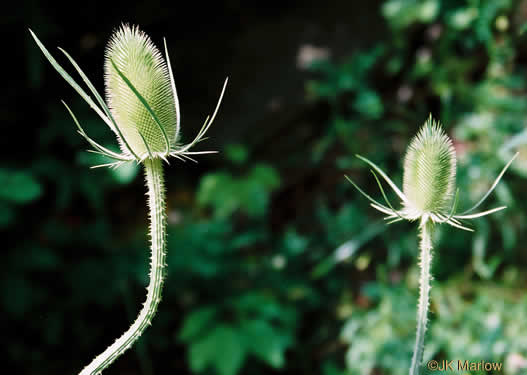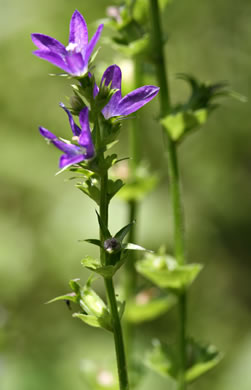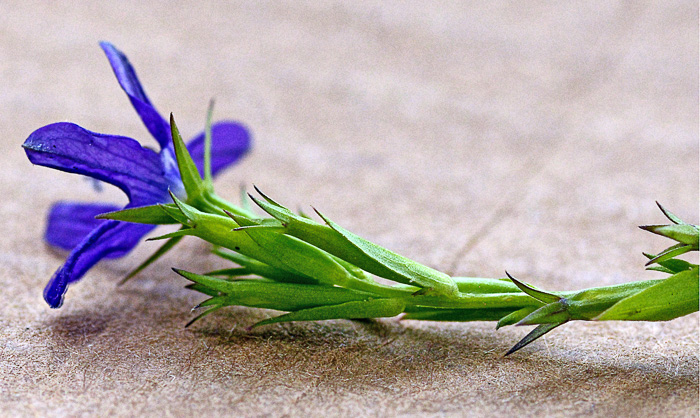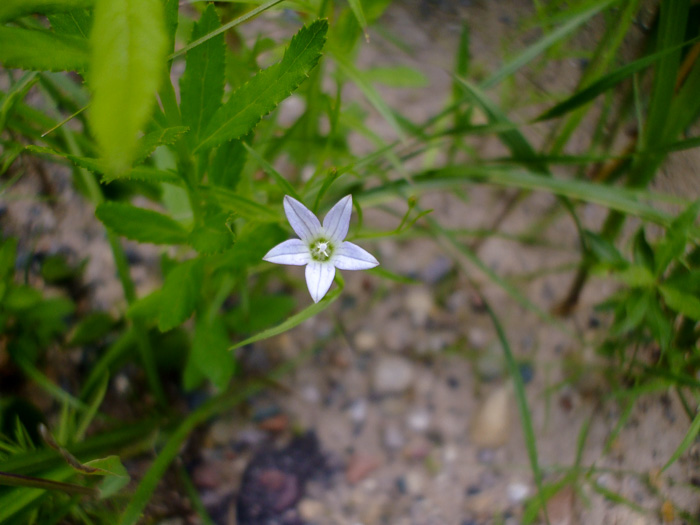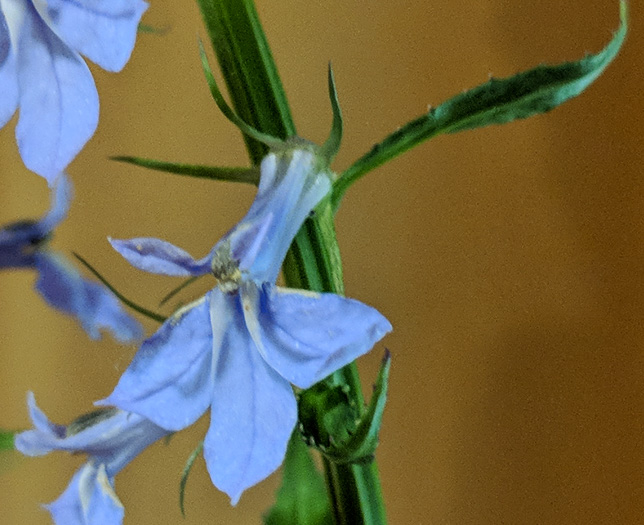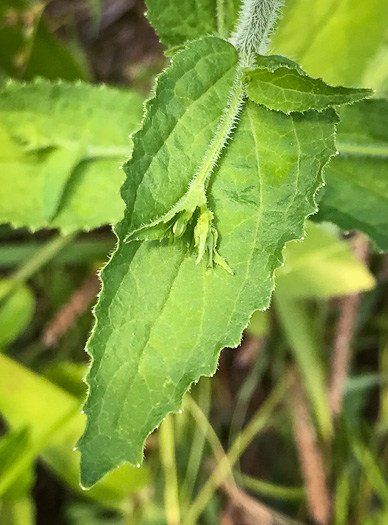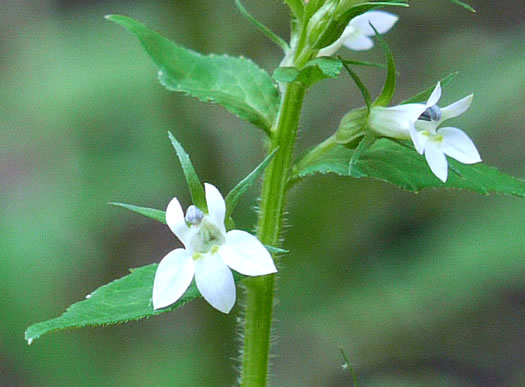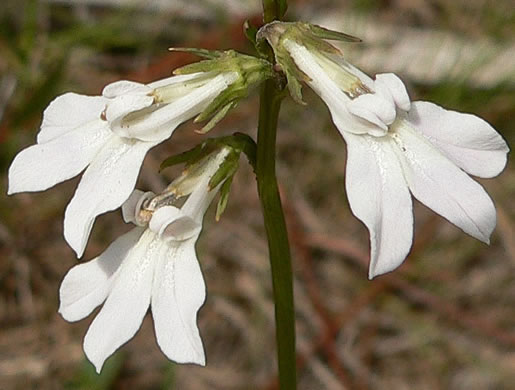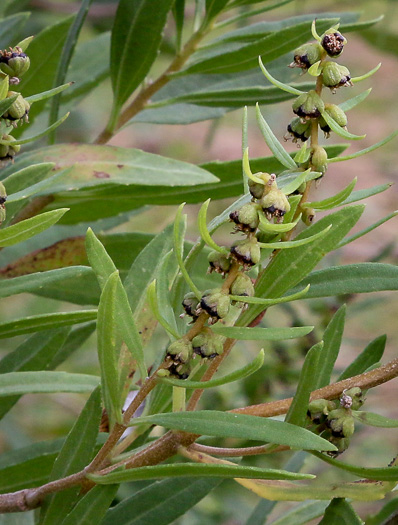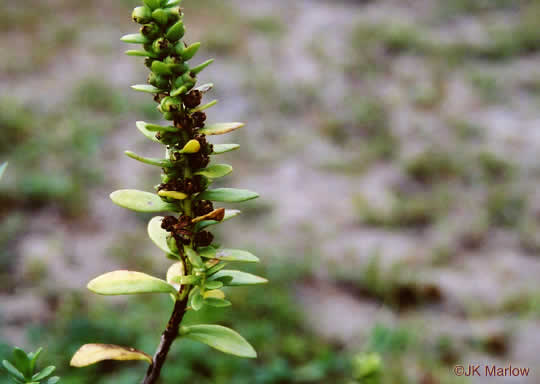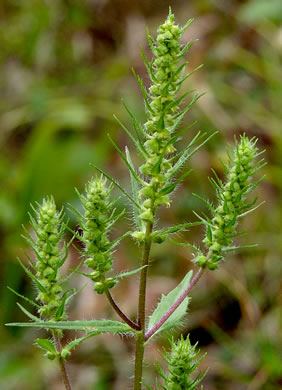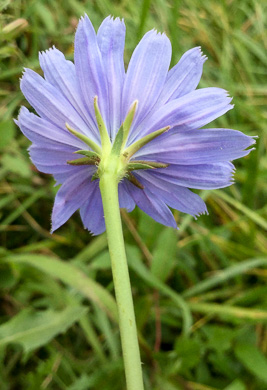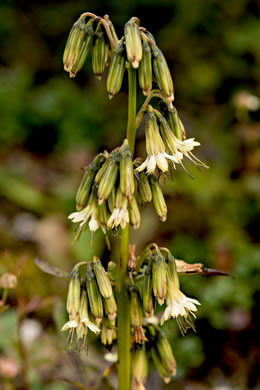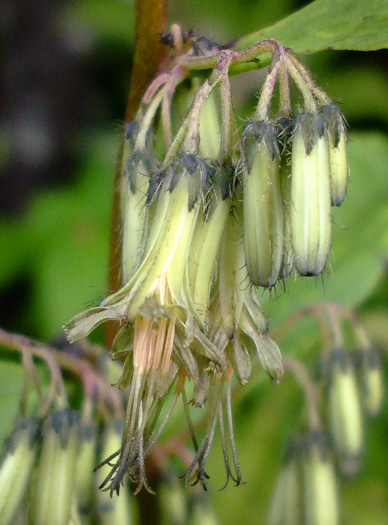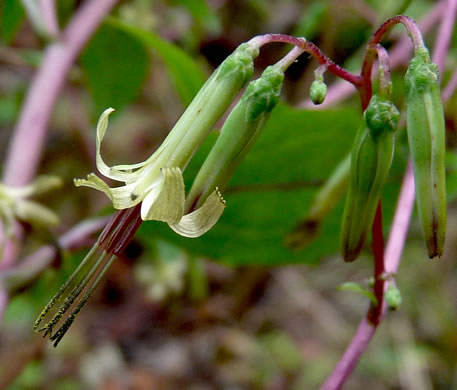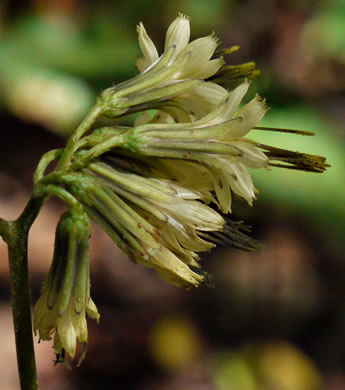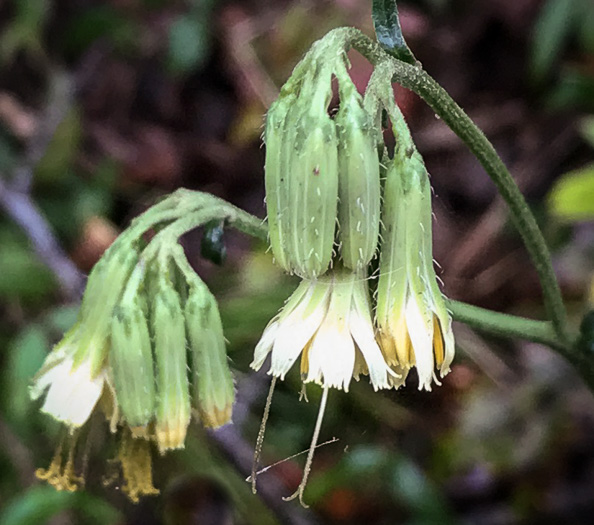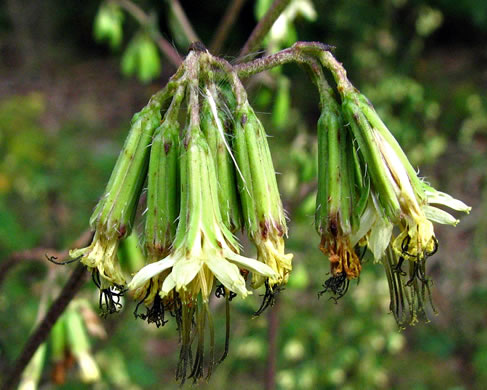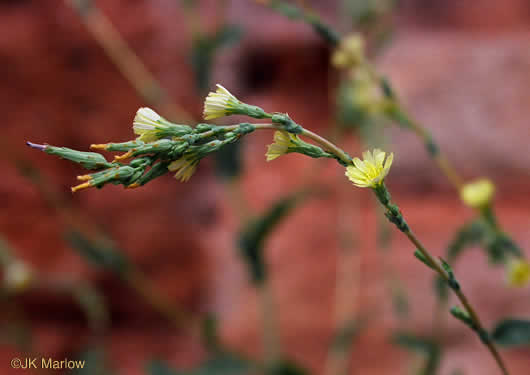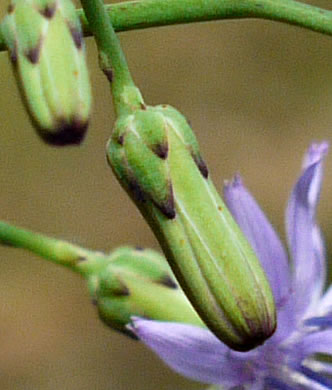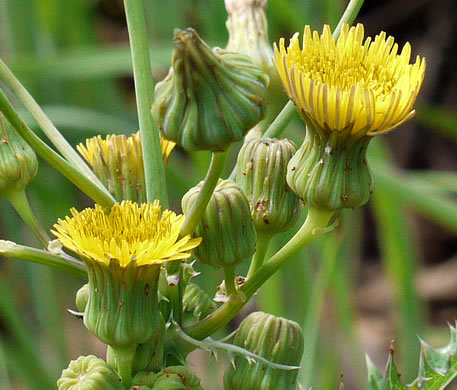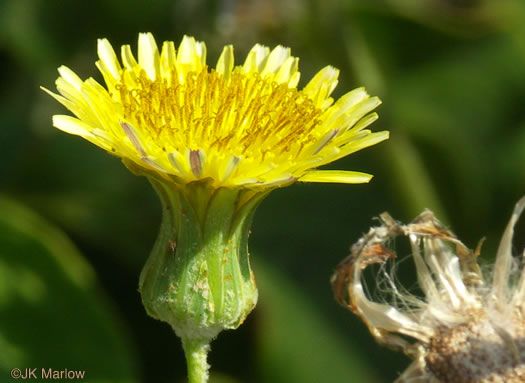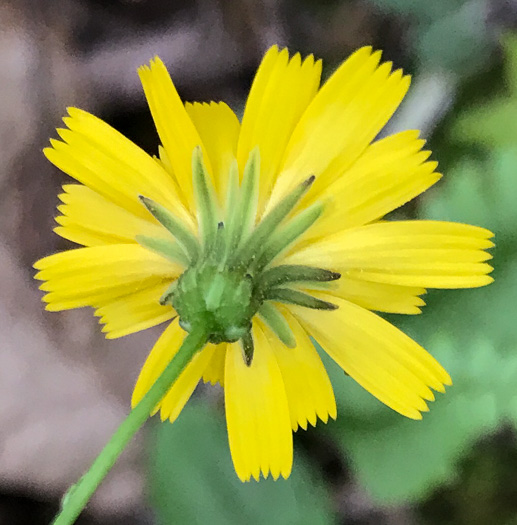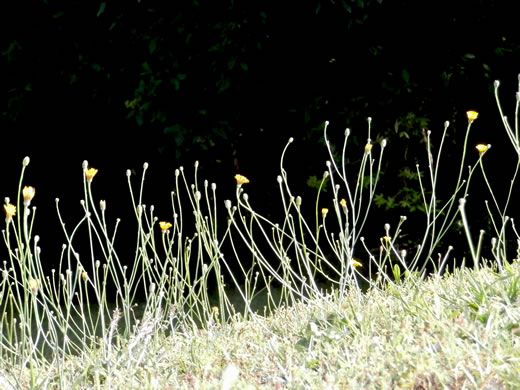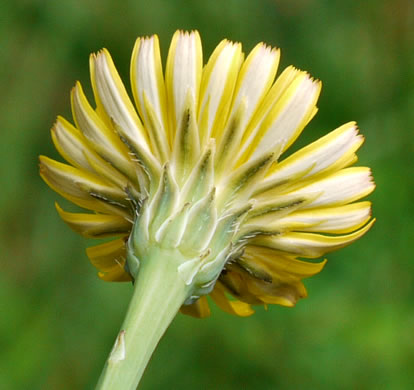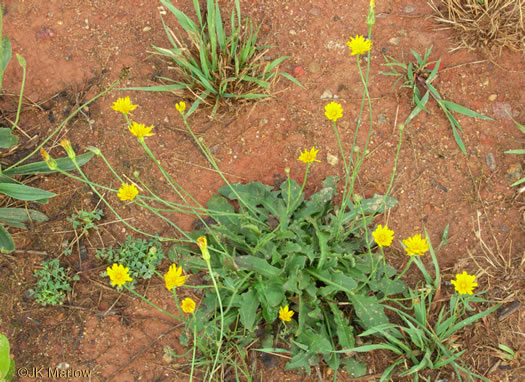Your search found 455 image(s) illustrating the term "bract." For a written explanation, click on "bract" in the Glossary.
PAGE 1 PAGE 2 PAGE 3 PAGE 4 PAGE 5 PAGE 6 PAGE 7 PAGE 8
To see larger pictures, click or hover over the thumbnails.
To go to the plant's detail page, click its name.
 Short-toothed Mountain-mint,
Pycnanthemum muticum var. 1
Short-toothed Mountain-mint,
Pycnanthemum muticum var. 1
Bracts of the inflorescence puberulent on upper surface, margins not ciliate, per Weakley's Flora (2020).
 Appalachian Mountain-mint,
Pycnanthemum montanum
Appalachian Mountain-mint,
Pycnanthemum montanum
Bracts of the inflorescence glabrous (or very sparsely pubescent) on the upper surface, per Weakley's Flora (2023).
 Hoary Mountain-mint,
Pycnanthemum incanum +
Hoary Mountain-mint,
Pycnanthemum incanum +
Flowers clustered at terminals with whitish floral leaves and bracts, per Forest Plants of the Southeast and Their Wildlife Uses (Miller & Miller, 2005).
 Beadle's Mountain-mint,
Pycnanthemum beadlei
Beadle's Mountain-mint,
Pycnanthemum beadlei
Bracts of the inflorescence puberulent on the upper surface, the margins not ciliate, per Weakley's Flora (2022).
 Loomis's Mountain-mint,
Pycnanthemum loomisii
Loomis's Mountain-mint,
Pycnanthemum loomisii
Flower heads rather flat-topped, ~ 1-2" wide, subtended by whitened bracts, per Vascular Plants of North Carolina.
 Loomis's Mountain-mint,
Pycnanthemum loomisii
Loomis's Mountain-mint,
Pycnanthemum loomisii
Upper leaves and bracts hoary (white-haired) on both sides as if dusted with white powder, per Wildflowers of Tennessee, the Ohio Valley, and the Southern Appalachians (Horn, Cathcart, Hemmerly, & Duhl, 2005).
 Shaggy Hedge-hyssop,
Sophronanthe pilosa
Shaggy Hedge-hyssop,
Sophronanthe pilosa
Sepals linear or linear-lanceolate, exceeded by the linear bractlets, per Vascular Flora of the Carolinas (Radford, Ahles, & Bell, 1968).
 Shaggy Hedge-hyssop,
Sophronanthe pilosa
Shaggy Hedge-hyssop,
Sophronanthe pilosa
Flowers occur singly at leaf bases, nearly sessile, with two leafy bracts, per Wildflowers of the Sandhills Region (Sorrie, 2011).
 Branched Hedge-hyssop,
Gratiola ramosa
Branched Hedge-hyssop,
Gratiola ramosa
Sepals 5, sometimes with 1-2 bracts just below, per Wildflowers of the Eastern United States (Duncan & Duncan, 1999).
 Roundfruit Hedge-hyssop,
Gratiola virginiana
Roundfruit Hedge-hyssop,
Gratiola virginiana
Bractlets linear, slightly longer than the sepals. Sepals 4-6mm long, per Aquatic and Wetland Plants of Southeastern United States (Godfrey & Wooten, 1979 & 1981).
 Flatrock Pimpernel,
Lindernia monticola
Flatrock Pimpernel,
Lindernia monticola
Leaves primarily in basal rosette, stem lvs strongly reduced upward to bracts, per Weakley's Flora.
 Small's Beardtongue,
Penstemon smallii
Small's Beardtongue,
Penstemon smallii
Lower bracts of inflorescence foliose, slightly smaller than cauline leaves, per Weakley's Flora.
 Small's Beardtongue,
Penstemon smallii
Small's Beardtongue,
Penstemon smallii
Thyrse leafy, spreading, with leaf-like bracts, per Vascular Flora of the Carolinas (Radford, Ahles, & Bell, 1968).
 Downy Beardtongue,
Penstemon australis
Downy Beardtongue,
Penstemon australis
Thyrse not leafy; bracts of the inflorescence reduced, per Vascular Flora of the Carolinas (Radford, Ahles, & Bell, 1968).
 Smooth Beardtongue,
Penstemon laevigatus
Smooth Beardtongue,
Penstemon laevigatus
Panicle narrow; the bracts reduced, not leaflike, per Vascular Flora of the Carolinas (Radford, Ahles, & Bell, 1968).
 Thymeleaf Speedwell,
Veronica serpyllifolia var. serpyllifolia
Thymeleaf Speedwell,
Veronica serpyllifolia var. serpyllifolia
The 3/8" oval leaves are replaced in the inflorescence by small bracts, per Wildflowers of the Southern Mountains (Smith, 1998).
 American Chaffseed,
Schwalbea americana
American Chaffseed,
Schwalbea americana
Calyx tubular, 2-lipped, lips unequal, subtended by 2 linear bractlets, per Vascular Flora of the Carolinas (Radford, Ahles, & Bell, 1968).
 Eastern Indian Paintbrush,
Castilleja coccinea
Eastern Indian Paintbrush,
Castilleja coccinea
Greenish-yellow flowers in terminal spikes subtended by red leaf-like bracts, per Wildflowers & Plant Communities of the Southern Appalachian Mountains and Piedmont (Spira, 2011).
 Cow-wheat,
Melampyrum lineare
Cow-wheat,
Melampyrum lineare
Stem leaves entire (bracteal leaves in and near the inflorescence sometimes pectinately fringed), per Weakley's Flora (2023).
 Squawroot,
Conopholis americana
Squawroot,
Conopholis americana
A 1/2" whitish 2-lipped flower projects from the stem above each bract, per Wildflowers of the Southern Mountains (Smith, 1998).
 Branched Foldwing,
Dicliptera brachiata
Branched Foldwing,
Dicliptera brachiata
0.6" long, tubular, deeply 2-lipped corolla with leaf-like bracts, per Wildflowers of Tennessee, the Ohio Valley, and the Southern Appalachians (Horn, Cathcart, Hemmerly, & Duhl, 2005).
 Yellow Bractspike,
Yeatesia viridiflora
Yellow Bractspike,
Yeatesia viridiflora
Flowers in conspicuously bracted spikes, per Manual of the Southeastern Flora (JK Small, 1933).
 Yellow Bractspike,
Yeatesia viridiflora
Yellow Bractspike,
Yeatesia viridiflora
Bracts and/or bractlets subtending the flowers conspicuous, 5-15mm long, obovate, per Weakley's Flora (2022).
 Bracted Plantain,
Plantago aristata
Bracted Plantain,
Plantago aristata
Separated from other Plantains by its narrow leaves and long hairy bracts, per Wildflowers of Tennessee, the Ohio Valley, and the Southern Appalachians (Horn, Cathcart, Hemmerly, & Duhl, 2005).
 Bracted Plantain,
Plantago aristata
Bracted Plantain,
Plantago aristata
Spike 1-6" long with stiff bracts protruding from the flower cluster, per Newcomb's Wildflower Guide (Newcomb, 1977).
 Bracted Plantain,
Plantago aristata
Bracted Plantain,
Plantago aristata
Linear floral bracts to 1" long extend well past the flowers, per Wildflowers of Tennessee (Carman, 2005).
 Wright's Plantain,
Plantago wrightiana
Wright's Plantain,
Plantago wrightiana
Bracts 0.5-1x long as calyx [vs. longer bracts of P. aristata 8-30mm long], per Weakley's Flora (2015).
 Many-seeded Plantain,
Plantago heterophylla
Many-seeded Plantain,
Plantago heterophylla
Calyx lobes hyaline margined, equal to or slightly shorter than bracts, per Vascular Flora of the Carolinas (Radford, Ahles, & Bell, 1968).
 Brazilian-clover,
Richardia brasiliensis
Brazilian-clover,
Richardia brasiliensis
Inflorescence terminal, enclosed by paired leaflike bracts, per Flora of China.
 Rough Mexican-clover,
Richardia scabra
Rough Mexican-clover,
Richardia scabra
Flowers grow in dense, roundish, terminal clusters from leaflike bracts, per Wildflowers of the Sandhills Region (Sorrie, 2011).
 Sweet-breath-of-spring,
Lonicera fragrantissima
Sweet-breath-of-spring,
Lonicera fragrantissima
Flowers paired, subtended by 2 linear bracts; calyx lobes essentially obsolete, per Vascular Flora of the Carolinas (Radford, Ahles, & Bell, 1968).
 Japanese Honeysuckle,
Lonicera japonica
Japanese Honeysuckle,
Lonicera japonica
Flowers paired, subtended by 2 leafy bracts, per Vascular Flora of the Carolinas (Radford, Ahles, & Bell, 1968).
 European Fly-honeysuckle,
Lonicera xylosteum
European Fly-honeysuckle,
Lonicera xylosteum
Corolla pubescent on the exterior. Bracts, sepals, and ovary glandular, per Weakley's Flora (2012).
 Beaked Cornsalad,
Valerianella radiata
Beaked Cornsalad,
Valerianella radiata
Outer bracts and bractlets of cymules spinulose-ciliate at apex, per Vascular Flora of the Carolinas (Radford, Ahles, & Bell, 1968).
 Wild Teasel,
Dipsacus fullonum
Wild Teasel,
Dipsacus fullonum
Bracts of the involucre curved upward, per Weakley's Flora (2012).
 Clasping Venus's Looking-glass,
Triodanis perfoliata
Clasping Venus's Looking-glass,
Triodanis perfoliata
Sepals lanceolate, acute to acuminate. Bracteal lvs about as wide as long, per Vascular Flora of the Carolinas (Radford, Ahles, & Bell, 1968).
 Southern Venus's Looking-glass,
Triodanis biflora
Southern Venus's Looking-glass,
Triodanis biflora
Sepals lanceolate, acute to acuminate. Bracteal lvs usually longer than wide, per Vascular Flora of the Carolinas (Radford, Ahles, & Bell, 1968).
 Largeflower Marsh-bellflower,
Palustricodon uliginosus
Largeflower Marsh-bellflower,
Palustricodon uliginosus
Corolla 5-13mm long; pedicels ascending, the bractless portion 1-8cm long, per Weakley's Flora (2020).
 Southern Lobelia,
Lobelia amoena
Southern Lobelia,
Lobelia amoena
All calyx segments entire, not toothed (ignore leafy bract), per Weakley's Flora (2020).
 Indian-tobacco,
Lobelia inflata
Indian-tobacco,
Lobelia inflata
Lower flowers with ovate-leafy bracts, per Weakley's Flora (2022).
 Indian-tobacco,
Lobelia inflata
Indian-tobacco,
Lobelia inflata
Bracts longer than the pedicels. Calyx lobes linear, 2-7mm long, entire, per Vascular Flora of the Carolinas (Radford, Ahles, & Bell, 1968).
 White Lobelia,
Lobelia paludosa
White Lobelia,
Lobelia paludosa
Calyx segments not auriculate; pedicels lacking bracteoles, per Weakley's Flora (2012).
 Southern Maritime Marsh-elder,
Iva frutescens var. frutescens
Southern Maritime Marsh-elder,
Iva frutescens var. frutescens
Flower heads pendent, each subtended by a foliaceous bract, per Vascular Flora of the Carolinas (Radford, Ahles, & Bell, 1968).
 Seashore Elder,
Iva imbricata
Seashore Elder,
Iva imbricata
Flowers in the axils of upper bracteal leaves; fruit a yellow-brown achene, per Native Shrubs and Woody Vines of the Southeast (Foote & Jones, 1989).
 Sumpweed,
Iva annua
Sumpweed,
Iva annua
Racemes 3-16cm long. Heads pendant, each head subtended by a foliaceous bract, per Vascular Flora of the Carolinas (Radford, Ahles, & Bell, 1968).
 Chicory,
Cichorium intybus
Chicory,
Cichorium intybus
Short outer bracts and long narrow inner bracts usually glandular-ciliate, per Vascular Flora of the Carolinas (Radford, Ahles, & Bell, 1968).
 Gall-of-the-earth,
Nabalus trifoliolatus
Gall-of-the-earth,
Nabalus trifoliolatus
Involucre smooth with 7-9 principal bracts and 9-13 ray flowers per head, per Wildflowers of Tennessee, the Ohio Valley, and the Southern Appalachians (Horn, Cathcart, Hemmerly, & Duhl, 2005).
 Roan Mountain Rattlesnake-root,
Nabalus roanensis
Roan Mountain Rattlesnake-root,
Nabalus roanensis
The involucres have some long spreading hairs and black-tipped bracts, per Wildflowers of the Southern Mountains (Smith, 1998).
 Tall Rattlesnake-root,
Nabalus altissimus
Tall Rattlesnake-root,
Nabalus altissimus
Usually 5 florets in each head, subtended by 5 smooth principal bracts, per Wildflowers of the Southern Mountains (Smith, 1998).
 Lion's-foot Rattlesnake-root,
Nabalus serpentaria
Lion's-foot Rattlesnake-root,
Nabalus serpentaria
Principal (inner) involucral bracts much longer than smaller (outer) ones, per Wildflowers of the Southern Mountains (Smith, 1998).
 Lion's-foot Rattlesnake-root,
Nabalus serpentaria
Lion's-foot Rattlesnake-root,
Nabalus serpentaria
Inner bracts minutely bristly, outer narrowly lanceolate. Rays yellow-white, per Wildflowers of the Southern Mountains (Smith, 1998).
 Lion's-foot Rattlesnake-root,
Nabalus serpentaria
Lion's-foot Rattlesnake-root,
Nabalus serpentaria
Involucre has 8 principal bracts w a few long coarse hairs, oft black-dotted, per Wildflowers of Tennessee (Carman, 2005).
 Prickly Lettuce,
Lactuca serriola
Prickly Lettuce,
Lactuca serriola
Involucres 10-15mm long, 3-5mm broad. Bracts imbricate, per Vascular Flora of the Carolinas (Radford, Ahles, & Bell, 1968).
 Woodland Lettuce,
Lactuca floridana
Woodland Lettuce,
Lactuca floridana
Heads cylindric or tapering inward toward apex. Bracts imbricate, per Vascular Flora of the Carolinas (Radford, Ahles, & Bell, 1968).
 Prickly Sowthistle,
Sonchus asper
Prickly Sowthistle,
Sonchus asper
Involucres 10-13mm long, 8-14mm broad, bracts lanceolate, per Vascular Flora of the Carolinas (Radford, Ahles, & Bell, 1968).
 Annual Sowthistle,
Sonchus oleraceus
Annual Sowthistle,
Sonchus oleraceus
Involucres 8-13mm long, 6-14mm broad; bracts rarely glandular, per Vascular Flora of the Carolinas (Radford, Ahles, & Bell, 1968).
 Rattlesnake Hawkweed,
Hieracium venosum
Rattlesnake Hawkweed,
Hieracium venosum
Peduncles usually stipitate-glandular. Bracts acute, about 1mm wide, per Vascular Flora of the Carolinas (Radford, Ahles, & Bell, 1968).
 Hairy Cat's-ear,
Hypochaeris radicata
Hairy Cat's-ear,
Hypochaeris radicata
Stems naked, or only with few and very small bracts, per Weakley's Flora (2015).
 Hairy Cat's-ear,
Hypochaeris radicata
Hairy Cat's-ear,
Hypochaeris radicata
Involucral bracts imbricate, in several series, per Vascular Flora of the Carolinas (Radford, Ahles, & Bell, 1968).
 Hairy Cat's-ear,
Hypochaeris radicata
Hairy Cat's-ear,
Hypochaeris radicata
All leaves basal, possibly some bracts on main stem, per Wildflowers of the Eastern United States (Duncan & Duncan, 1999).

